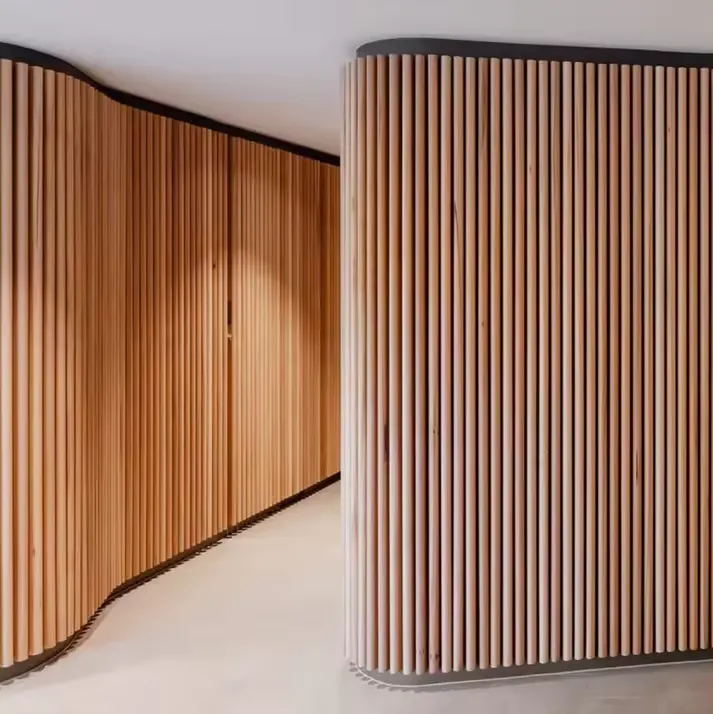Flexible Acoustic Wood Wall Panels A Beautiful Solution for Sound Management
In contemporary architectural design, there is a growing emphasis on the integration of aesthetics and functionality. Among the diverse materials available in the market, flexible acoustic wood wall panels have emerged as a popular choice, blending acoustic performance with the natural beauty of wood. These innovative panels not only enhance the aesthetic appeal of a space but also significantly improve sound quality. This article explores the features, benefits, applications, and installation methods of flexible acoustic wood wall panels.
Understanding Acoustic Wood Panels
Acoustic wood panels are specifically designed to manage sound within a given environment. They function by absorbing excess sound waves, thereby reducing echo and noise levels. The flexibility of these panels allows them to conform to various shapes and surfaces, making them ideal for both curved and flat applications. Unlike traditional rigid panels, flexible acoustic wood panels can be easily molded to fit the contours of walls or ceilings, offering greater design versatility.
The Benefits of Flexible Acoustic Wood Wall Panels
1. Noise Reduction One of the primary advantages of acoustic wood panels is their ability to minimize noise pollution. Whether in an office, restaurant, or home theater, these panels help create quieter spaces, enhancing the auditory experience.
2. Aesthetic Appeal Wood brings a warmth and natural elegance to any space. With a variety of finishes, colors, and textures available, architects and designers can choose panels that complement the overall design theme of a room.
3. Sustainability Many acoustic wood panels are made from sustainably sourced materials, making them an environmentally friendly choice. This aspect aligns with the growing trend toward eco-conscious building practices.
4. Flexibility in Design The adaptability of flexible acoustic wood wall panels allows for creative designs. Curved installations can add architectural interest and uniqueness to a space, contributing to a more dynamic environment.
5. Enhanced Productivity In workspaces, reducing noise distractions can lead to improved focus and productivity. Acoustic wood panels effectively create a more conducive environment for collaboration and concentration.
6. Easy Maintenance These panels are typically easy to clean and maintain. Regular dusting or the occasional wipe down with a damp cloth is often sufficient to keep them looking pristine.
Ideal Applications
Flexible acoustic wood wall panels are suited for a variety of settings, including
flexible acoustic wood wall panels

- Commercial Spaces Restaurants, cafes, and offices can benefit from the noise-reducing properties of these panels, helping create inviting and functional environments.
- Educational Institutions Schools and universities can utilize these panels to manage sound in classrooms, auditoriums, and hallways, fostering better learning conditions.
- Entertainment Venues Theaters, concert halls, and recording studios require careful acoustic management, making these panels a perfect fit.
- Residential Areas Homeowners can enhance the comfort of their living spaces with acoustic wood panels, particularly in home theaters, music rooms, or open-concept designs.
Installation Process
The installation of flexible acoustic wood wall panels is a straightforward process. Here’s a general guideline
1. Preparation Start by measuring the area where the panels will be installed. Ensure the surface is clean, dry, and free from any debris.
2. Cutting the Panels Depending on the shape and design of your installation, panels may need to be cut to the required size. Most flexible panels can be trimmed easily with a utility knife or a saw.
3. Adhesive Application Use a strong adhesive suitable for both wood and the surface you are applying it to. Apply in a uniform layer to ensure secure adhesion.
4. Mounting Press the panels onto the surface, ensuring they are aligned correctly. For curved applications, gently mold the panel to fit the contour while maintaining even pressure.
5. Finishing Touches After installation, check for any gaps or areas that need adjustment. Allow the adhesive to cure fully as per manufacturer's instructions.
In conclusion, flexible acoustic wood wall panels represent a harmonious blend of beauty and function. They not only enrich the visual aspect of spaces but also provide essential acoustic benefits. As architects and designers continue to innovate, these panels will undoubtedly gain further prominence in creating environments that are both aesthetically pleasing and acoustically efficient. Whether for commercial, educational, or residential purposes, the advantages of flexible acoustic wood wall panels make them a compelling choice for any sound-sensitive project.
